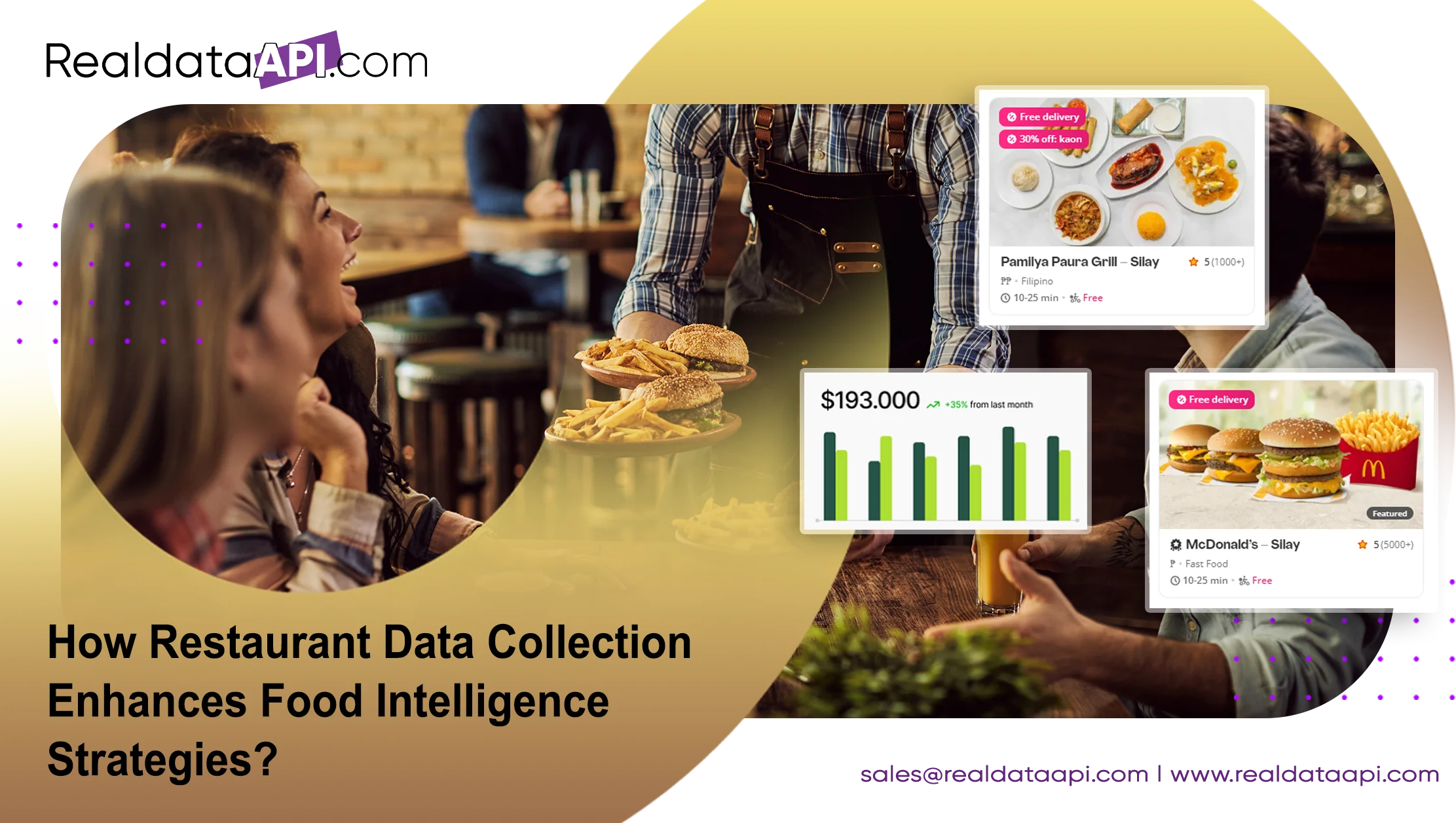


Discover how restaurant data scraping boosts food intelligence with insights into market trends, customer preferences, and competitive strategies.

Introduction
In the highly competitive restaurant industry, staying ahead requires more than just great food and service. Understanding market trends, customer preferences, and competitor strategies is crucial. This is where restaurant data collection and food intelligence come into play. By leveraging advanced data collection techniques, including restaurant data scraping, businesses can gain valuable insights that drive strategic decisions and enhance their competitive edge. In this blog, we will explore the importance of restaurant data collection and how it can significantly boost food intelligence strategies.
The Importance of Restaurant Data Collection
1. Understanding Customer Preferences
One of the primary benefits of restaurant data collection is gaining insights into customer preferences. By collecting data on customer reviews, popular menu items, and dining habits, restaurants can tailor their offerings to meet the needs and desires of their patrons. This not only improves customer satisfaction but also helps in developing targeted marketing campaigns.
2. Market Trend Analysis
In the dynamic food industry, staying updated with market trends is essential. By scraping restaurant data, businesses can monitor emerging trends, such as popular cuisines, dietary preferences, and seasonal dishes. This information allows restaurants to adapt their menus and promotional strategies to capitalize on current trends, attracting more customers and staying relevant in the market.
3. Competitive Benchmarking
Understanding what competitors are doing is crucial for any business. Extracting restaurant data from competitors’ websites and online platforms enables businesses to benchmark their offerings against those of their competitors. This includes analyzing menu pricing, special offers, and customer reviews. Such competitive intelligence helps restaurants identify areas for improvement and develop strategies to differentiate themselves in the market.
4. Operational Efficiency
Data collection is not only useful for customer-facing aspects but also for improving internal operations. By analyzing data on order volumes, peak hours, and inventory usage, restaurants can optimize staffing levels, manage inventory more effectively, and reduce waste. This leads to cost savings and more efficient operations.
Methods of Restaurant Data Collection
1. Manual Data Collection
While manual data collection involves physically gathering data, such as customer surveys and feedback forms, it is often time-consuming and limited in scope. However, it provides valuable qualitative insights that can complement quantitative data collected through other means.
2. Point-of-Sale (POS) Systems
POS systems are valuable sources of data, capturing information on every transaction made in a restaurant. This includes data on what items were purchased, at what times, and by whom. Analyzing POS data provides insights into sales patterns, customer preferences, and inventory management.
4. Social Media and Review Sites
Social media platforms and review sites like Yelp and TripAdvisor are treasure troves of customer feedback and sentiment. Extracting restaurant data from these sources allows businesses to gauge public perception, identify popular menu items, and address any negative feedback proactively.
5. Mobile Apps and Online Ordering Platforms
Many restaurants use mobile apps and online ordering platforms to facilitate orders. Data from these platforms provides insights into customer ordering habits, preferred payment methods, and delivery preferences. This data is valuable for optimizing online services and improving customer experience.
Enhancing Food Intelligence Strategies with Data
1. Menu Optimization
By analyzing data collected from various sources, restaurants can optimize their menus. This includes identifying popular dishes, adjusting portion sizes, and pricing items competitively. Menu optimization ensures that the offerings meet customer expectations and drive profitability.
2. Targeted Marketing
Data-driven insights enable restaurants to create targeted marketing campaigns. For example, if data shows a high demand for vegan dishes, a restaurant can promote its vegan menu items through social media and email marketing. Targeted marketing increases the effectiveness of promotional efforts and attracts specific customer segments.
3. Customer Relationship Management (CRM)
Effective CRM involves using data to build and maintain relationships with customers. By collecting data on customer preferences and behaviors, restaurants can create personalized experiences, such as sending birthday discounts or recommending new menu items based on past orders.
Conclusion
Restaurant data collection is a powerful tool that can significantly enhance food intelligence strategies. By leveraging various data collection methods, including restaurant data scraping and extracting restaurant data from multiple sources, businesses can gain valuable insights into customer preferences, market trends, and operational efficiencies. These insights enable restaurants to optimize menus, target marketing efforts, improve customer engagement, and streamline operations.
For businesses looking to implement robust data collection and analysis strategies, partnering with experts like Real Data API can provide the necessary tools and expertise. Contact us today to extract restaurant data and drive your business forward!
